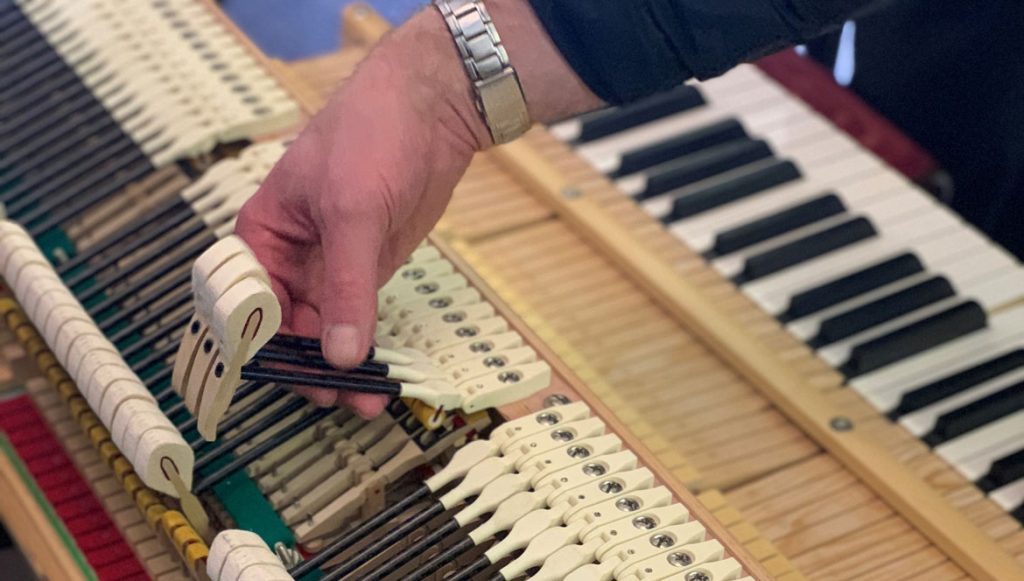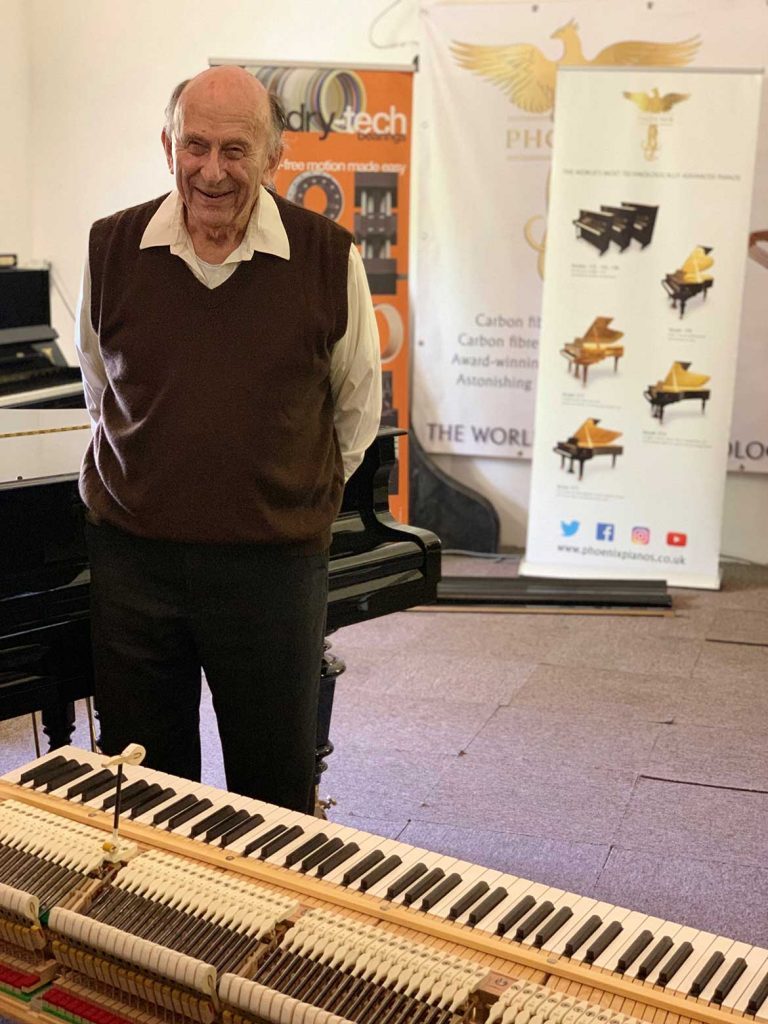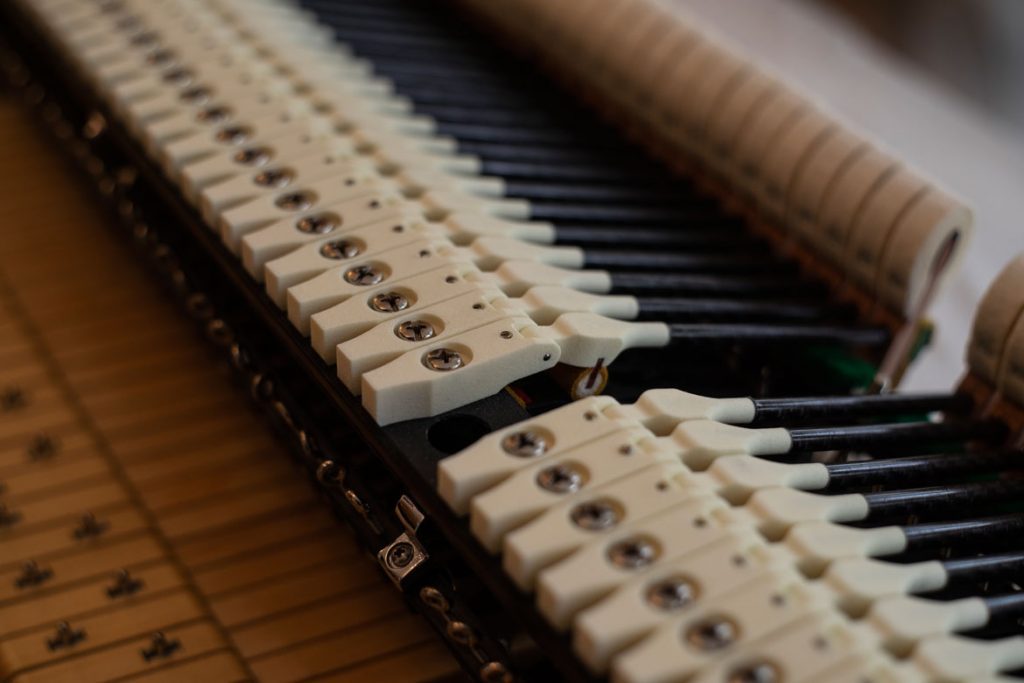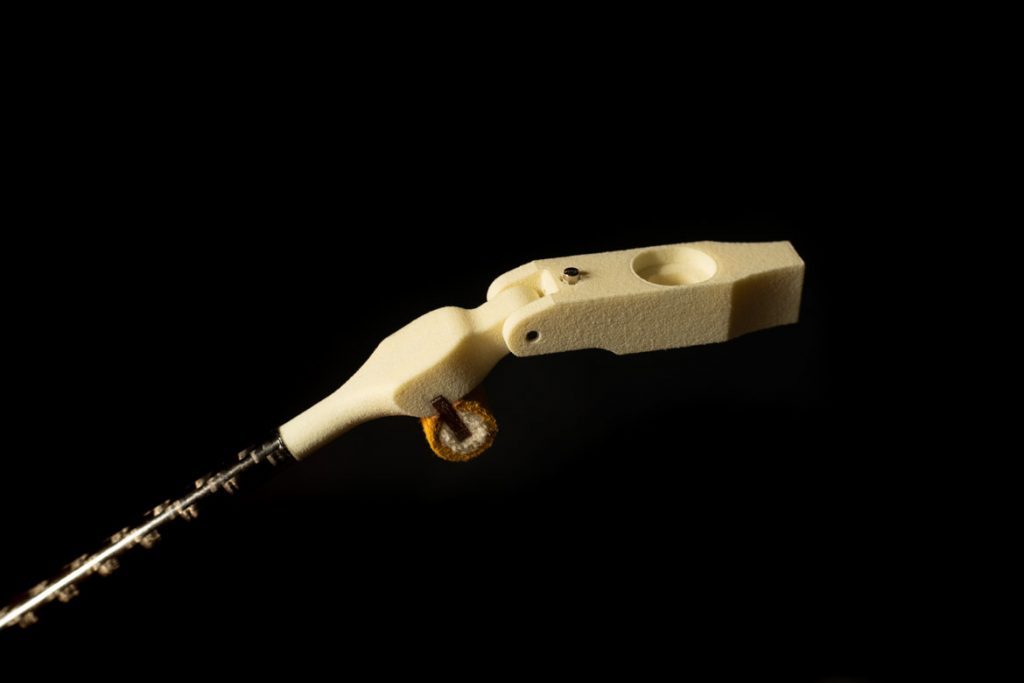Material innovation for the music industry – piano parts made of iglidur plastic
Dirk Zacharias | 1. August 2019
Components or spare parts for musical instruments from 3D printing. We have received more and more requests in this exciting area and we are happy to find suitable solutions for the extraordinary requirements. By using low-wear and durable plastic components from the 3D printer we can meet the most individual requirements. Like with a grand piano made by Phoenix Pianos, for example.

The basic design of the grand piano has existed almost without change since 1876 – ever since the Steinway Centennial Grand was created. That was the go-ahead for the grand piano industry, and ideas came thick and fast during the 19th century, while the basic concept remained the same up to the 20th century.
With a grand piano, the strings are struck by hammers and then make a sound. These usually consist of wood, or to be more precise, of hornbeam and lose precision over time, which means they have to be serviced regularly. Apart from that, wood is sensitive to high humidity and temperature, as it expands and goes rigid. If the hammer does not strike the strings precisely, unwanted tones result. In addition, it is extremely difficult to continuously produce identical objects of wood, which is why the material was in dire need of innovation and an increase in efficiency.
The engineer Richard Dain thought it was time to fundamentally improve the grand piano’s technology. Dain, who is 92 years old, leads Phoenix Pianos and looks back on a very impressive past as an engineer. One of Dain’s favourite pastimes is to play the piano himself as an amateur pianist – which makes him an expert for this project.

He was looking for an innovative material that met the requirements, and he finally found igus, who are famous for their high-performance polymers. Manufacturing the individual plastic parts in small amounts was no problem. By printing the plastic parts in 3D, the required amount of the suitable iglidur material could be delivered very quickly.

iglidur polymer parts inside of a Phoenix Piano
Together with igus, the “D3D hammer system” was developed, which has all the advantages of the traditional system. The designers at Phoenix even expect the new system to have a longer service life for the grand piano as unwanted side effects are a thing of the past. The simple change from wood to plastic alone significantly reduced sensitivity to moisture and temperature. The ivory coloured components are also very similar to the original material and go perfectly with the rest of the design concept.

Hammer for grand piano from iglidur plastic
Pianists who have already played the D3D grand piano compare it with changing from an Austin Seven to a Ferrari. You can achieve more vigour with less effort and significantly increase the connection to the grand piano. Also, the feeling of controlling the instrument is said to have intensified tremendously. All in all, the change from traditional wood to the high-performance plastic from the 3D printer seems to have been very successful. The reaction from experts at least speaks for itself.
Elements made of iglidur plastics can also be found in other musical instruments. Wherever a good and constant coefficient of friction in moving parts is concerned, the high-performance plastics by igus are the right choice. And 3D printing by igus offers solutions for individual parts, prototypes or small volumes. With our online tools like the 3D printing service, we offer customers the possibility to simply upload CAD data of components, determine material and amount and place an order. Try it for yourself.
You can find the upload area of the 3D printing service here.
Do you have questions regarding certain components and the possibilities of our 3D printing offer? Simply get in touch with us. Together, we will find the ideal solution.


Dirk Zacharias
Hi Simon,
thank you.
The parts were printed by igus in one of our SLS Printers in our own iglidur material.
Kind regards
Dirk
Simon Michaelis
Interesting use case! Do you know if the customer printed the parts by himself or did igus print the parts?